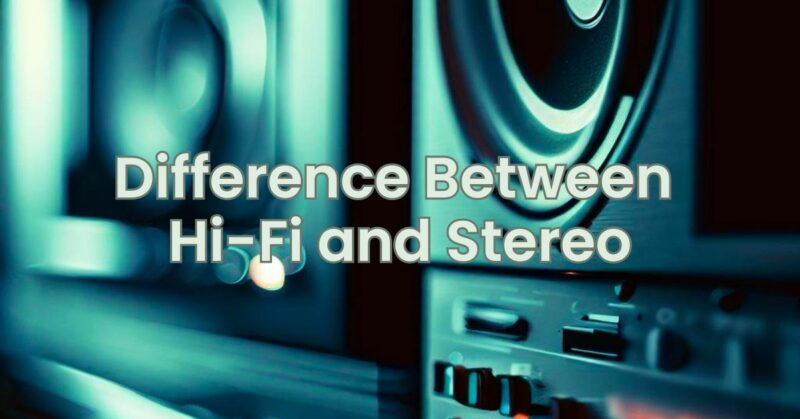When it comes to audio systems, terms like “Hi-Fi” and “Stereo” are often used interchangeably, but they have distinct meanings and implications. Understanding the difference between Hi-Fi and Stereo can help you make informed decisions when setting up your audio setup or when shopping for audio equipment. In this article, we’ll explore the characteristics and features of both Hi-Fi and Stereo systems.
- Stereo
Stereo refers to a sound system that reproduces audio through two independent audio channels, typically labeled as “left” and “right.” A stereo system aims to create a realistic soundstage by utilizing two speakers or speaker channels to provide a sense of spatial separation and depth. Each channel carries specific audio information, allowing for stereo imaging, where different sounds are localized between the left and right speakers.
A stereo system can consist of various components, including an amplifier, preamplifier, and source components such as a CD player, turntable, or digital audio player. The key characteristic of a stereo system is the ability to deliver separate audio signals to the left and right speakers, resulting in a more immersive listening experience.
- Hi-Fi (High-Fidelity)
Hi-Fi, short for “High-Fidelity,” refers to a system that aims to reproduce sound as accurately and faithfully as possible, maintaining the integrity of the original audio signal. A Hi-Fi system is designed to provide a high level of sonic clarity, detail, and accuracy, minimizing distortion and coloration of the sound.
Hi-Fi systems often prioritize audio quality and utilize components that are carefully engineered and built to high standards. This includes high-quality speakers, amplifiers, digital-to-analog converters (DACs), and other audio equipment. The goal is to reproduce music or audio recordings with a level of accuracy that closely resembles the original performance or recording.
While a Hi-Fi system can be stereo, not all stereo systems are necessarily Hi-Fi. Hi-Fi is a broader term that encompasses various audio systems and setups, including multi-channel audio configurations like surround sound systems or high-end two-channel stereo setups.
Here is a table that summarizes the key differences between HiFi and Stereo:
| Feature | HiFi | Stereo |
|---|---|---|
| Definition | High fidelity | Two separate channels of audio |
| Components | High-quality amplifiers, speakers, and turntables | Two speakers |
| Purpose | To reproduce sound as accurately as possible | To create a more immersive listening experience |
| Target audience | Audiophiles | People who want to enjoy music in a group setting |
In summary, the key difference between Hi-Fi and Stereo lies in their intended goals and priorities. Stereo refers to the use of two independent audio channels for creating a sense of stereo imaging, while Hi-Fi represents a broader pursuit of high-quality, accurate sound reproduction. A Hi-Fi system can be stereo, but a stereo system may not necessarily meet the standards of high-fidelity audio reproduction.
When setting up your audio system or purchasing audio equipment, consider your preferences and priorities. If you value accuracy and audio fidelity, investing in a Hi-Fi system with quality components is a wise choice. On the other hand, if your primary goal is creating a stereo soundstage with left-right separation, a stereo system can provide an immersive listening experience.

